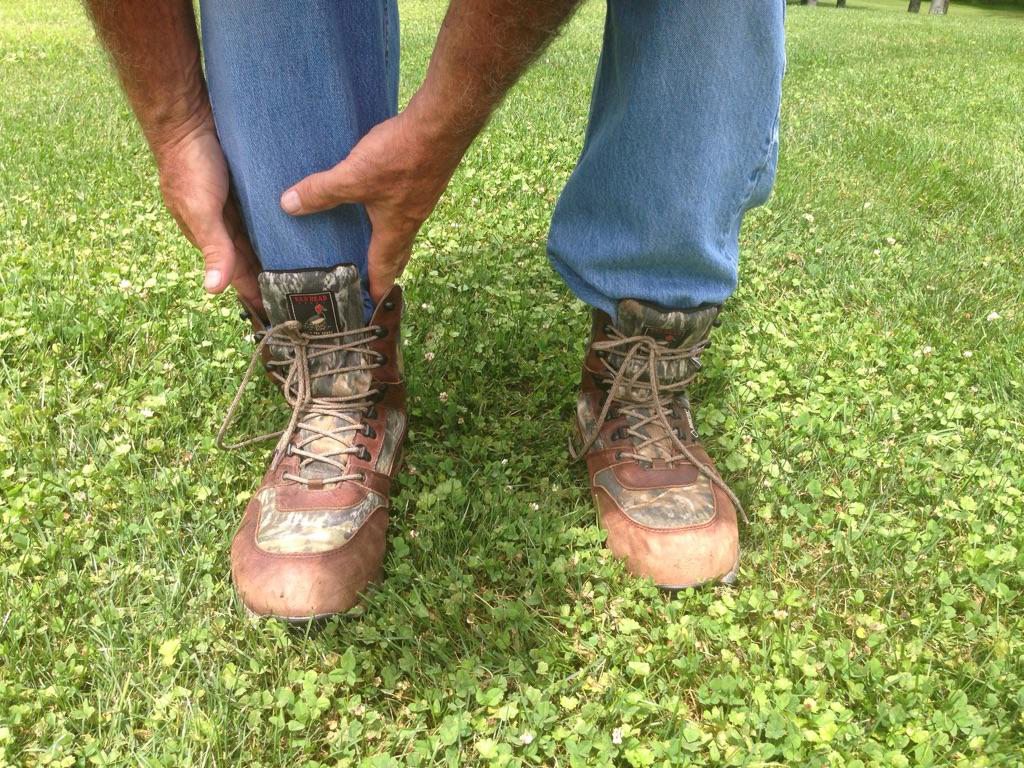
Lyme Disease
Each year approximately 30,000 cases of Lyme disease are reported to the Centers for Disease Control and Prevention, or CDC, by state health departments and the District of Columbia. It’s not uncommon for people in this region to know someone who has been affected by Lyme disease. With the number of confirmed diagnoses in Pennsylvania climbing from 4,287 in 2005 to 7,351 in 2015, according to the CDC, it’s important to understand how this disease is spread, the signs and symptoms and what you can do to keep yourself and your loved ones safe.
Lyme disease earned its name from the town of Lyme, Conn., where, in 1975, a cluster of children and adults residing there experienced uncommon arthritic symptoms. This cluster grew to 51 cases by 1977 and researches at Yale University identified and named this illness Lyme arthritis.
The name was changed to Lyme disease in 1979 when, according to Dr. Shaun Sheehan, Emergency Medicine Service Line Medical Director and Transfer Center Medical Director at Penn Highlands Healthcare, “additional symptoms such as neurological problems and severe fatigue were linked to the disease.”
In 1982, the cause of the disease, a bacteria named Borrelia Burgdorferi, was discovered. This bacteria is transmitted to people through the bite of infected blacklegged ticks, commonly known as deer ticks, according to Sheehan.
Blacklegged deer ticks are found throughout the eastern United States and in parts of the northern mid-west in wooded, brushy locations. According to the Pennsylvania Department of Health, Pennsylvania frequently leads the nation in confirmed cases of Lyme disease, with the presence of deer ticks confirmed in each of the state’s 67 counties.
Despite the high numbers of these blacklegged deer ticks in the region, Sheehan pointed out that only the nymphs, or immature ticks, and the adult females are able to transmit the Lyme disease bacteria. “Additionally, the tick must be attached for 24-48 hours before it passes the bacteria on to the host,” he said.
While most people associate deer ticks with deer and wooded areas, Sheehan pointed out that the most common culprit for transmitting this bacteria to these parasites are actually white-footed mice. He pointed out that the immature ticks can fill the ears of the mice carrying the Lyme disease bacteria. As the ticks feed off of the mice, the bacteria is transmitted to the tick. Eventually, the infected ticks get full and fall off of the mice before moving on to spread the bacteria to a new host.
Lyme disease is typically recognized by the symptoms that it causes, such as fatigue, headache and body aches, according to Sheehan. The most well-known symptom is the bull’s eye shaped rash at the site of the tick bite. While it occurs on a percentage of those diagnosed with Lyme disease between three and 30 days from the time of the bite, there are also a large percentage of patients who do not have this rash.
In addition to those symptoms, there are others that are more severe. There are several neurologic complications that can occur that may cause patients to experience mild brain disease or dysfunction, damage to the nerves which could impair sensation, movement or gland or organ function or even Bell’s palsy, a loss of muscle tone on one or both sides of the face. According to Sheehan, these severe symptoms typically occur after several weeks or months from the time of the bite in approximately 15-20 percent of patients who have not begun treatment for the disease.
There are also musculoskeletal symptoms that can begin after an average of six months from the initial infection. Sheehan indicated that the most notable symptom of this type is pain in the joints, muscles and tendons that migrates throughout the body. “The most common site is the knee,” said Sheehan. “This pain can last several days or even for a few weeks and then the joint returns to normal.”
Some patients encounter cardiac issues related to the Lyme disease. “This is noted in about 5-10 percent of patients, and it begins several weeks after they become infected,” said Sheehan. He added that these complications may last from 3-6 weeks.
Given the severity of the symptoms and complications of Lyme disease, it’s important to take steps to protect yourself and your loved ones from being bitten. The chances of being bitten by a tick can be significantly reduced with a few simple precautions. You should avoid tick-infested areas, especially in May, June and July. “These late-spring to mid-summer months are the peak feeding time for ticks,” said Sheehan.
When you are outside, especially in wooded areas, you should tuck your pant legs into socks or boot and tuck shirts into pants. In particularly risky areas, it is even recommended that you tape the area where pants and socks meet so that ticks cannot crawl under clothing. Clothing worn should be light in color so that, if a tick does climb onto you, it is easy to see spot them on your body.
Insect repellent containing a 20-30 percent concentration of DEET should be sprayed onto an adult’s clothes and any exposed skin to further reduce the risk of a tick bite. A concentration of 10 percent should be used for children. Clothing and camping gear should be treated with a special repellent called permethrin, which kills ticks on contact.
Additionally, it’s important to make sure that household pets are treated for ticks and that owners check them each time they have been outdoors.
If you live near the woods, remove fallen leaves and clear tall grass and brush around your home and at the edges of the lawn. You should also create a buffer between your lawn and the woods with chips or stone. Because deer often carry infected ticks that may fall off and later climb onto you, your family or your pet, discourage deer from coming onto your property.
If you discover a tick bite, you can go to your doctor’s office to have it removed. Or, if you feel comfortable, you may remove it yourself. It is very important to detach the tick’s head from the skin. There are tools that you can buy that will help you to safely remove a tick, or you can use fine-tipped tweezers.
It’s important that you grasp the tick as close to the skin’s surface as possible, and pull straight up with steady, even pressure. Do not twist, poke, squash or burn the tick. Also, do not smother the tick with petroleum jelly, alcohol or any other substance. The tick should not be left to work its way out, as that only gives it the time it needs to transmit bacteria.
Once the tick is removed, place it in a bag to bring to your doctor. This will help confirm diagnosis of Lyme disease quickly. Also, be sure to thoroughly clean the bit area, as well as your hands with rubbing alcohol, an iodine scrub or even soap and water. If you don’t plan to see your doctor, you should be sure to properly dispose of the tick by submersing it in alcohol, placing it in a sealed bag or container, wrapping tightly in tape or even flushing down the commode.
Sheehan added that, while Lyme disease is a major health issue in this region, it is just one example of a disease that can be transmitted to humans from infected ticks. This is why tick bites should be taken seriously, and treatment should be sought quickly. If you have been bitten by a tick and are experiencing any of the symptoms described, contact your doctor right away.
For more information about Lyme disease, go to www.cdc.gov/lyme/. For information about additional tick-borne diseases, go to www.cdc.gov/ticks/diseases/.

